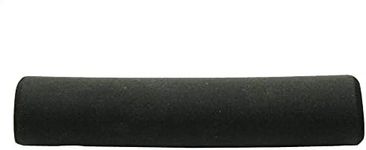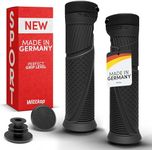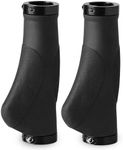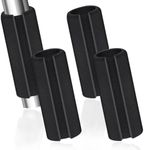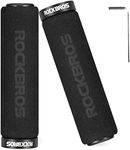Buying Guide for the Best Mountain Bike Grips
Choosing the right mountain bike grips is essential for ensuring comfort, control, and safety while riding. The grips are the point of contact between you and your bike, so they play a crucial role in your overall riding experience. When selecting mountain bike grips, consider factors such as grip material, diameter, length, texture, and locking mechanism. Each of these specifications can significantly impact your comfort and performance on the trails. Here's a breakdown of the key specs to help you make an informed decision.MaterialThe material of the grips affects both comfort and durability. Common materials include rubber, foam, and silicone. Rubber grips are durable and provide good grip in wet conditions, making them a popular choice for many riders. Foam grips are lightweight and offer excellent shock absorption, which is great for long rides. Silicone grips are known for their comfort and tackiness, providing a secure hold even without gloves. Choose a material that matches your riding style and the conditions you typically ride in.
DiameterThe diameter of the grips determines how they feel in your hands. Grips usually come in standard, thin, and thick diameters. Standard diameter grips are versatile and suitable for most riders. Thin grips are ideal for riders with smaller hands or those who prefer a more direct feel of the handlebars. Thick grips provide extra cushioning and are great for riders with larger hands or those who prioritize comfort over a direct handlebar feel. Consider your hand size and comfort preferences when selecting the diameter.
LengthThe length of the grips should match the width of your handlebars and your hand size. Standard grips are typically around 130mm long, which fits most handlebars and hand sizes. Shorter grips are available for riders with smaller hands or for use on narrower handlebars. Longer grips can provide extra space for hand movement and are suitable for riders with larger hands or those who prefer a wider handlebar setup. Ensure the grips you choose are compatible with your handlebar width and provide a comfortable fit for your hands.
TextureThe texture of the grips affects how secure and comfortable they feel in your hands. Grips with a more aggressive texture provide better traction and are ideal for technical riding or wet conditions. Smooth grips offer a more comfortable feel and are suitable for long rides or riders who prefer to wear gloves. Some grips feature a combination of textures to balance comfort and grip. Consider the type of riding you do and whether you ride with or without gloves when choosing the texture.
Locking MechanismThe locking mechanism of the grips ensures they stay securely in place on the handlebars. Lock-on grips have metal or plastic collars that clamp onto the handlebars, preventing any movement. These grips are easy to install and remove, making them a popular choice for many riders. Slide-on grips rely on friction to stay in place and are lighter but can sometimes slip, especially in wet conditions. If you prioritize security and ease of installation, lock-on grips are the way to go. If you prefer a lighter setup and don't mind occasional adjustments, slide-on grips can be a good option.


